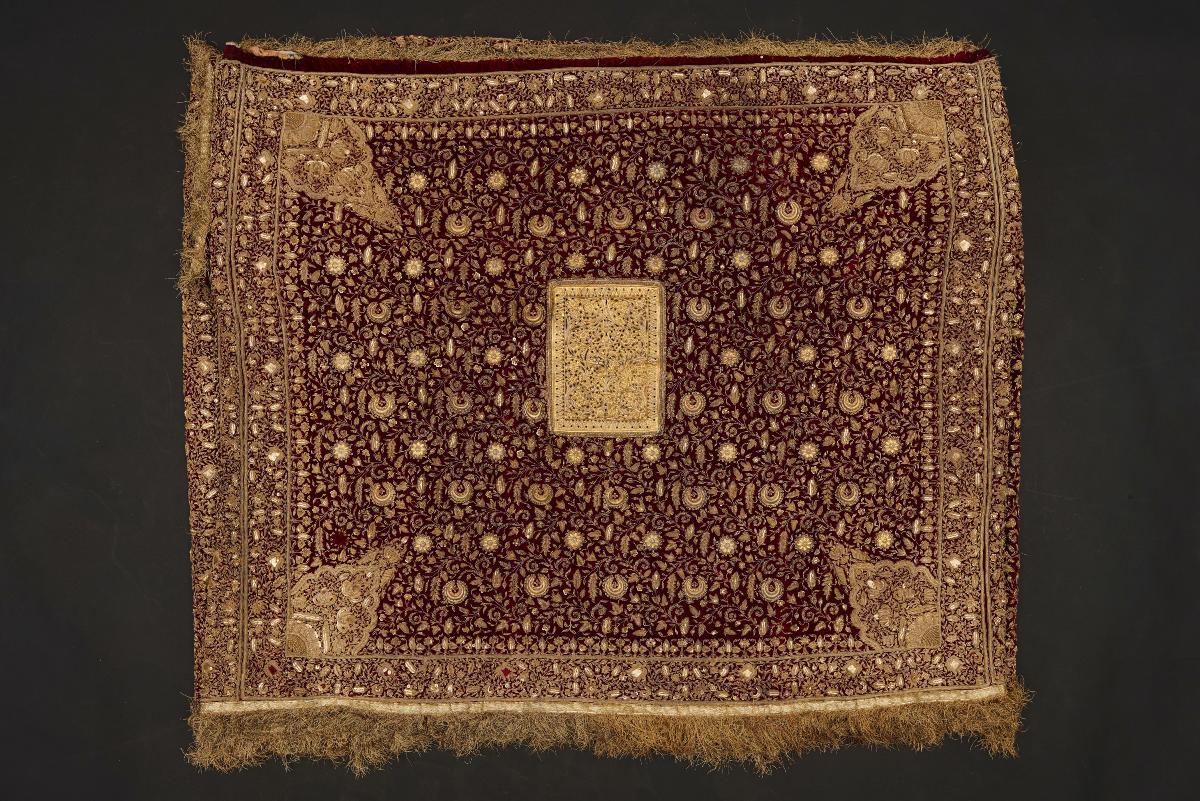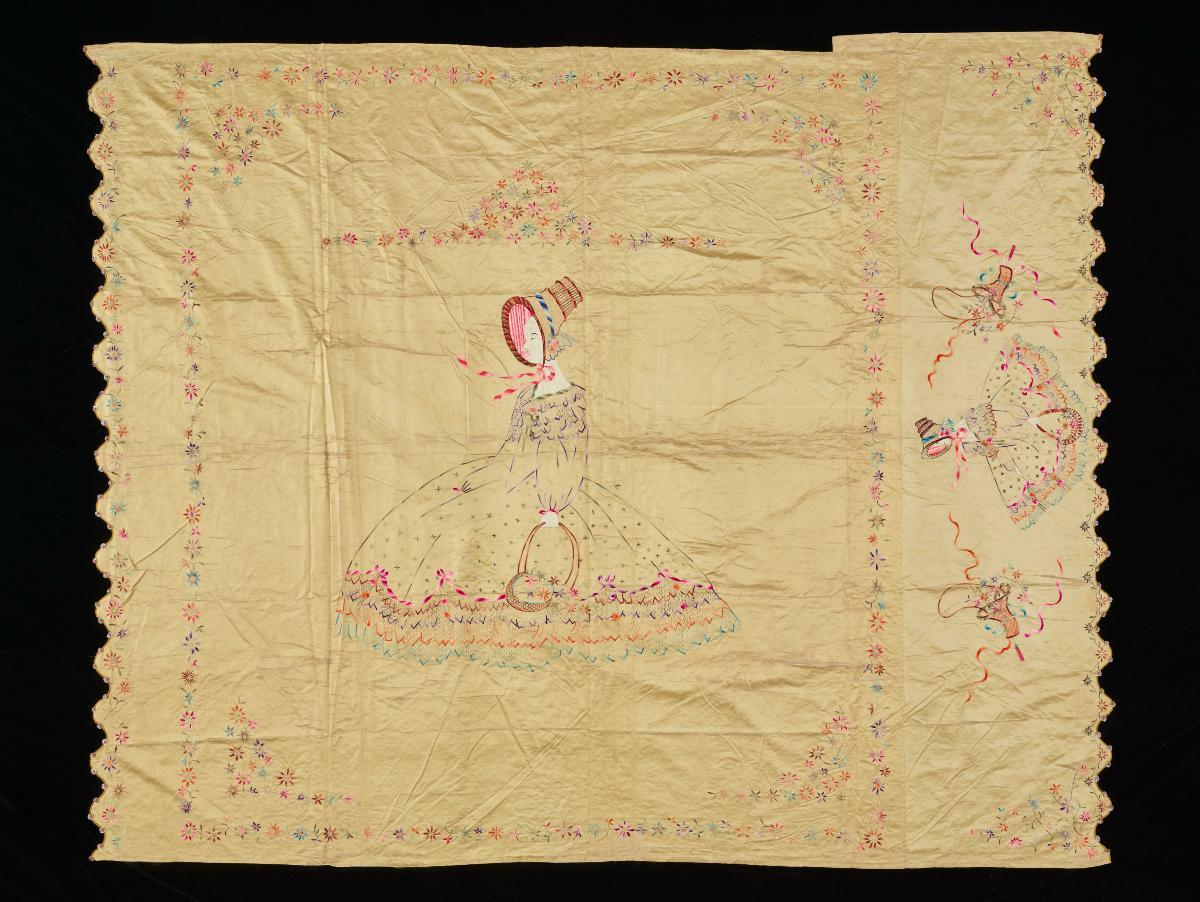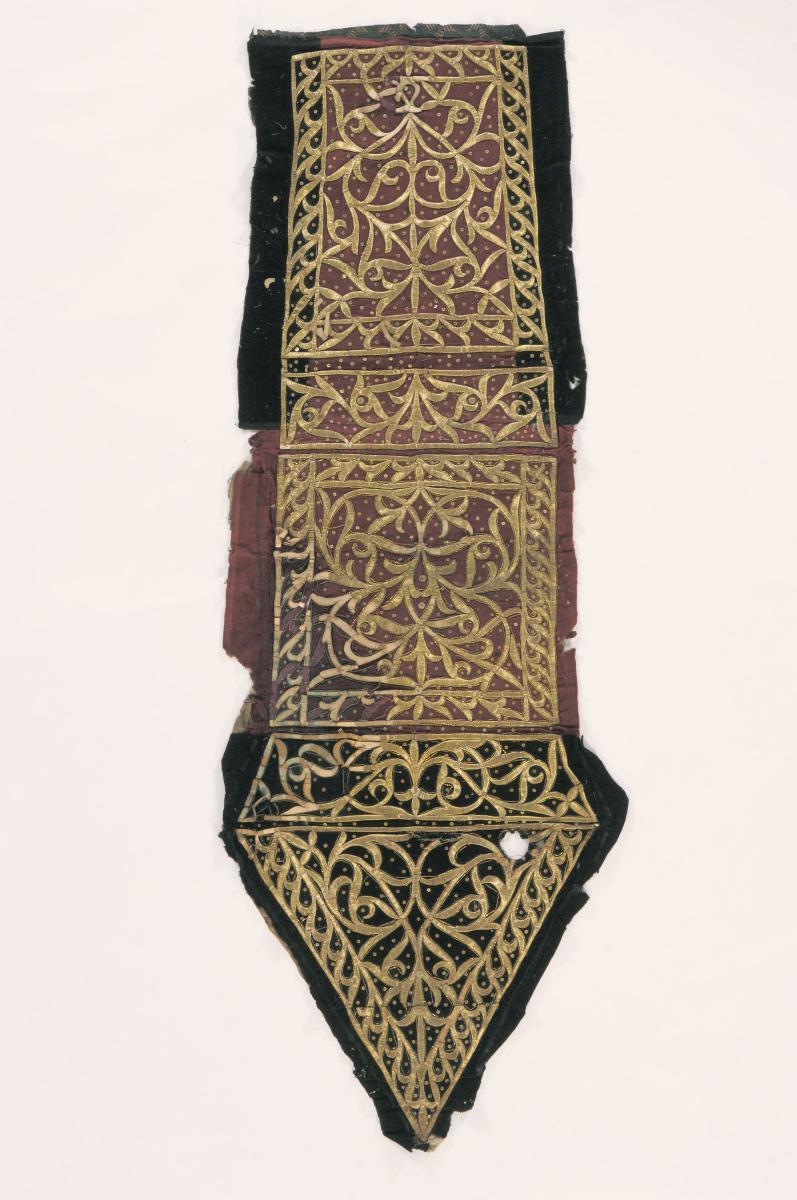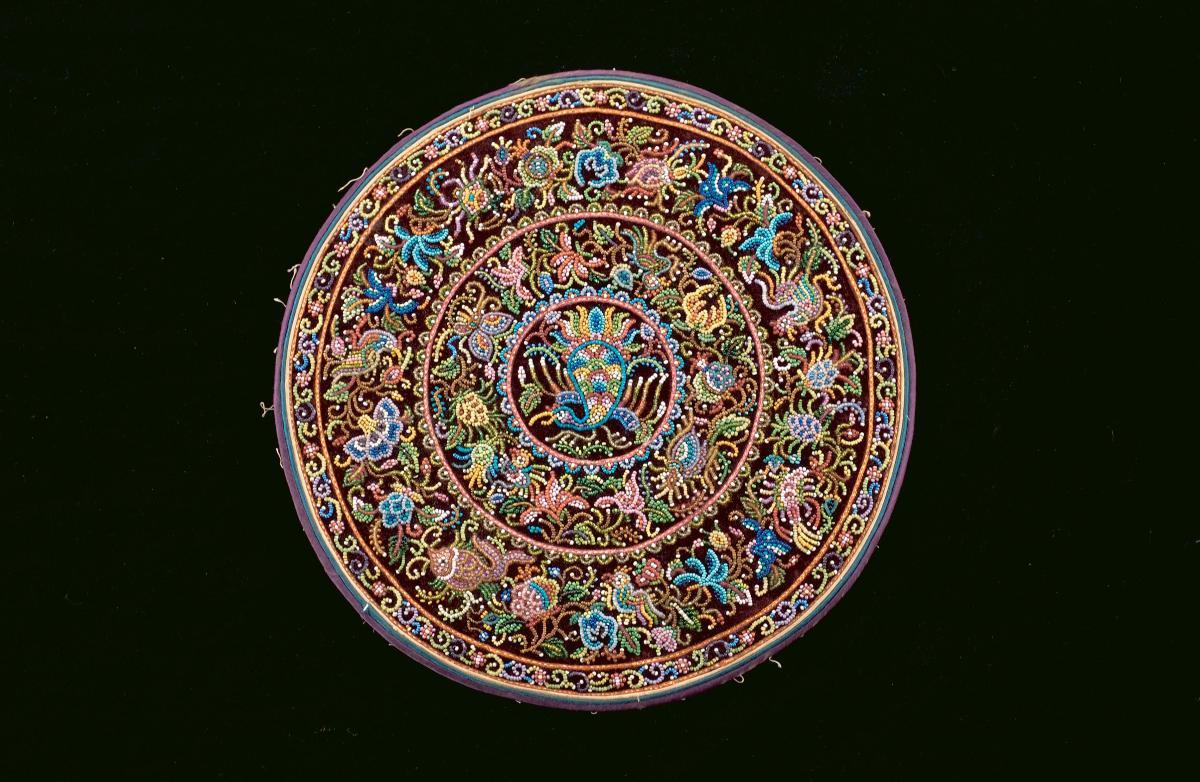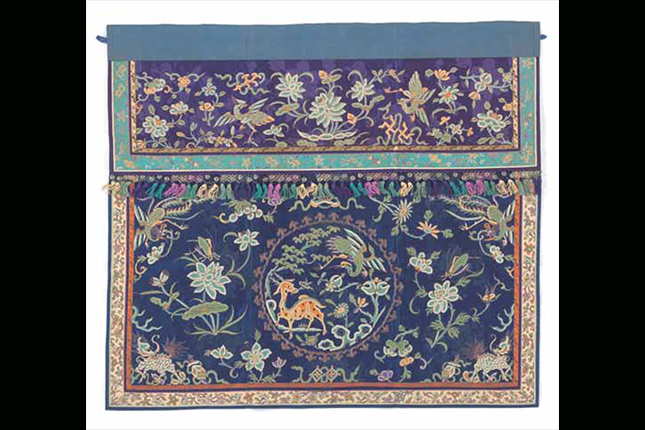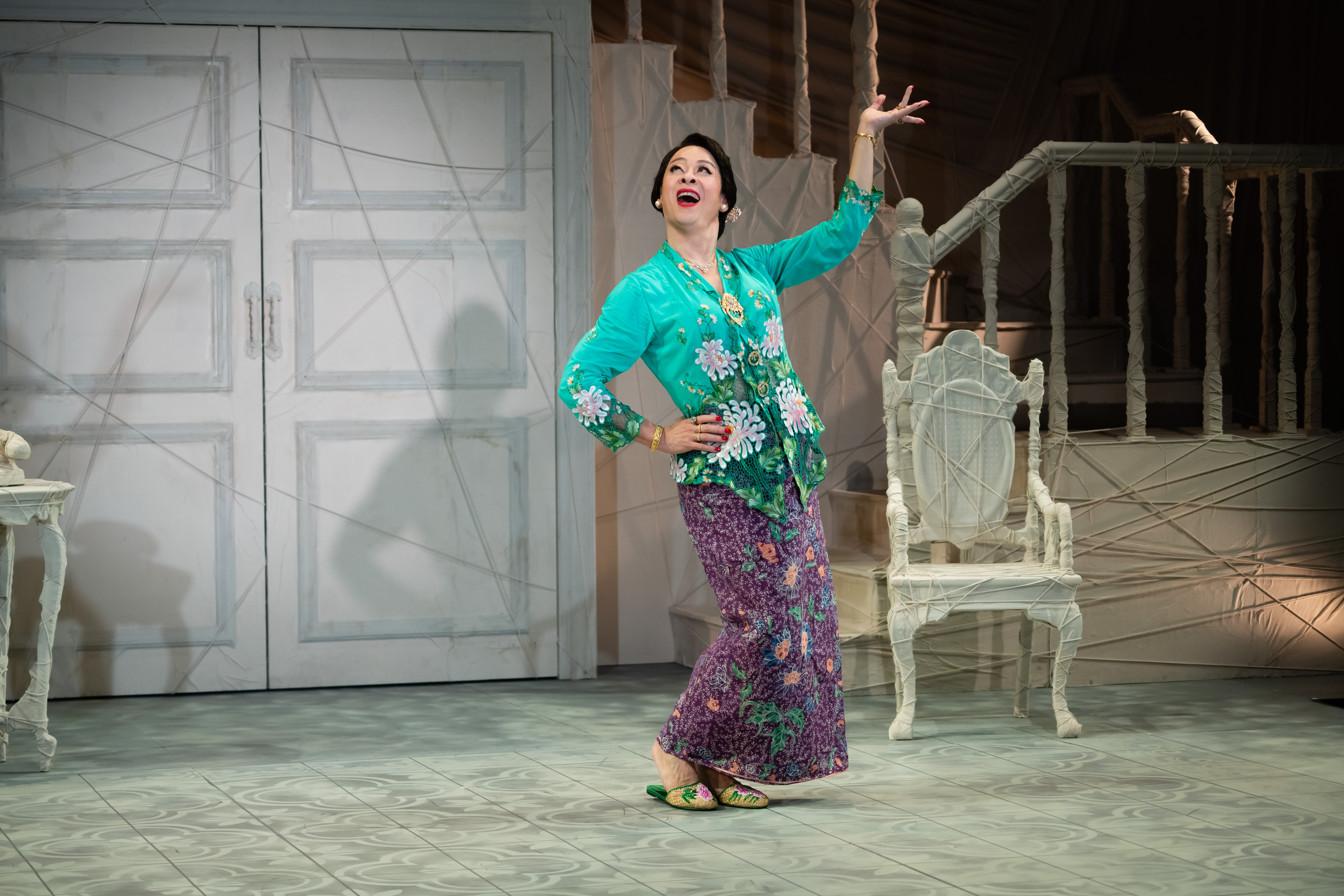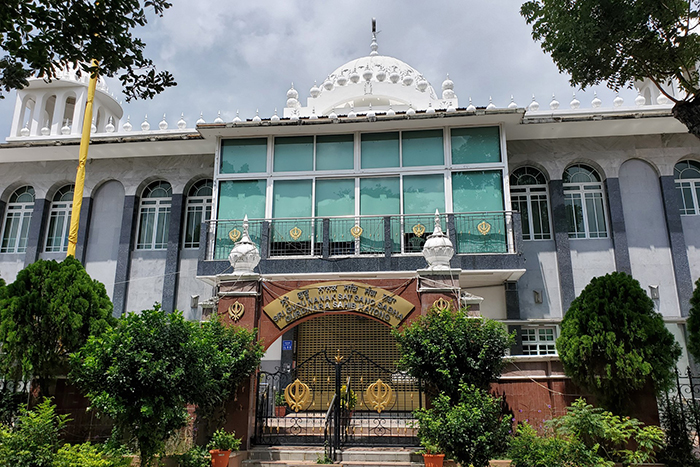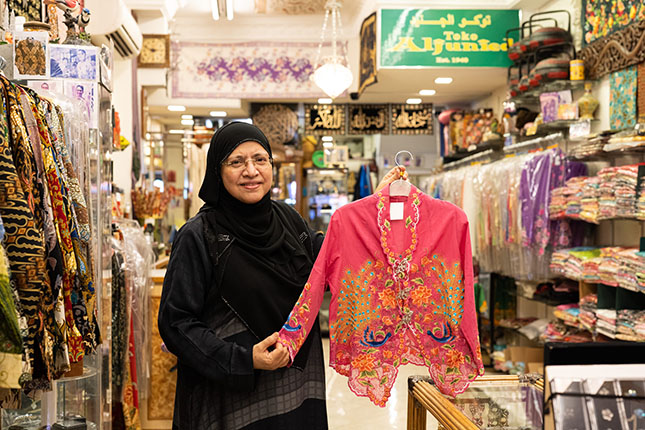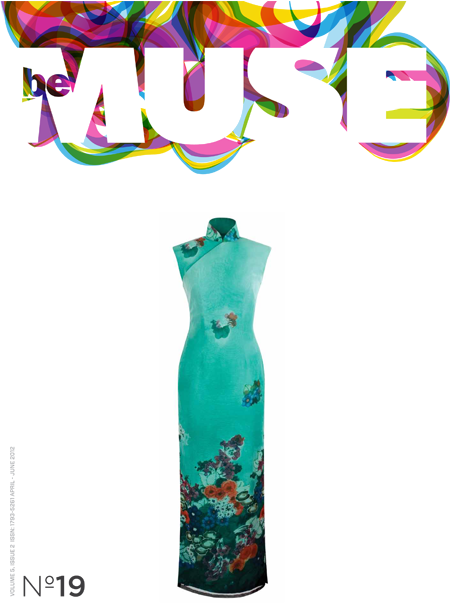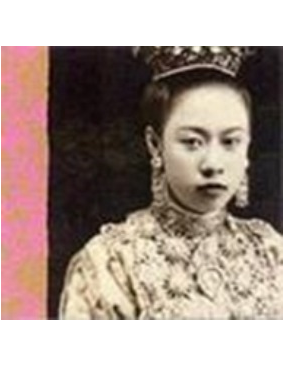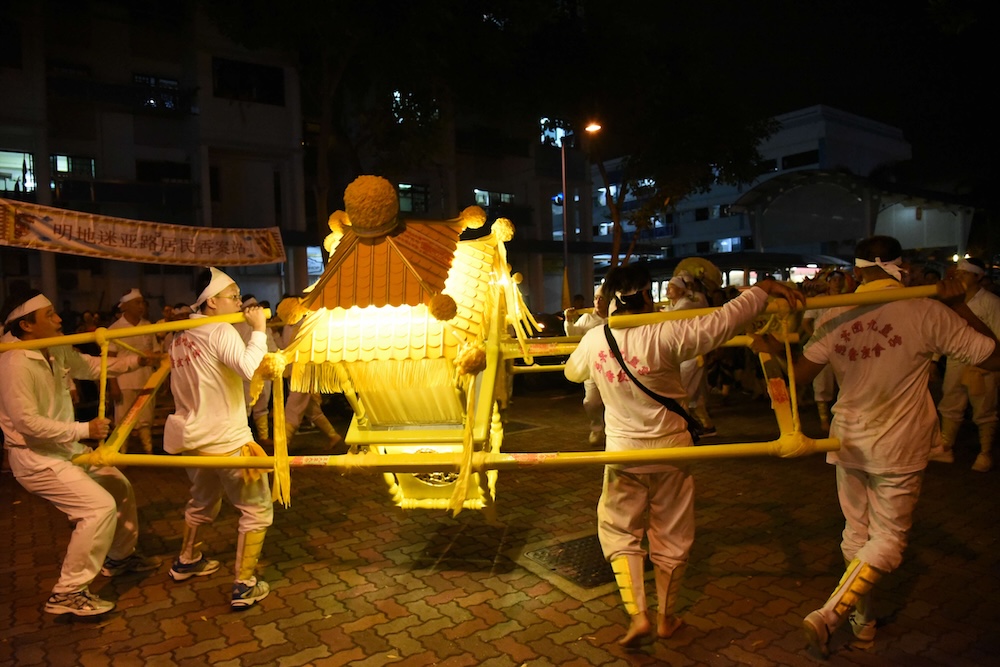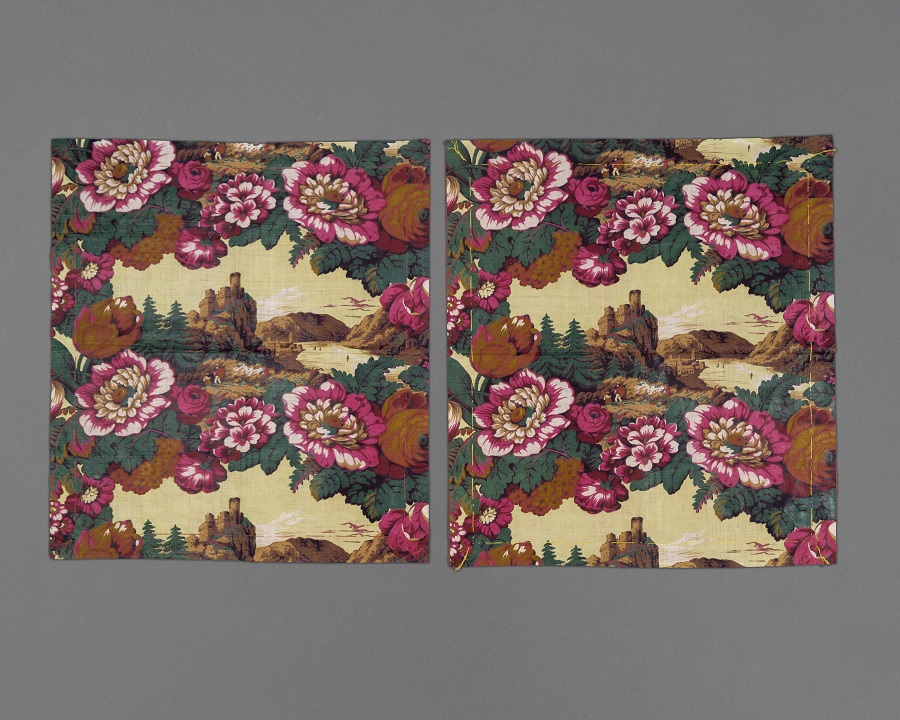Palanquins or palkhi as they are known in north India, were commonly used among the upper classes as a mode of transport for women. Strict traditions of pardah (veiling) amongst the upper classes led to the creation of many private spaces for women, and restrictions on their being seen in public. Travel was therefore usually conducted in a covered palanquin. Many Company School paintings from the 18th to 20th century depict palanquin processions in north India, from which various regional styles and techniques can be established. This very fine example would have been used exclusively during weddings, to transport the new bride back to her husband’s home. The velvet fabric is completely covered with zardozi (metal thread embroidery) using real gold and silver thread. To permit the bride to look outside, repousse silver windows with gaps in the design that act as peep-holes and ventilators, are sewn into the side panels. This palanquin cover would have probably been used by a royal family of the Lucknow region.




